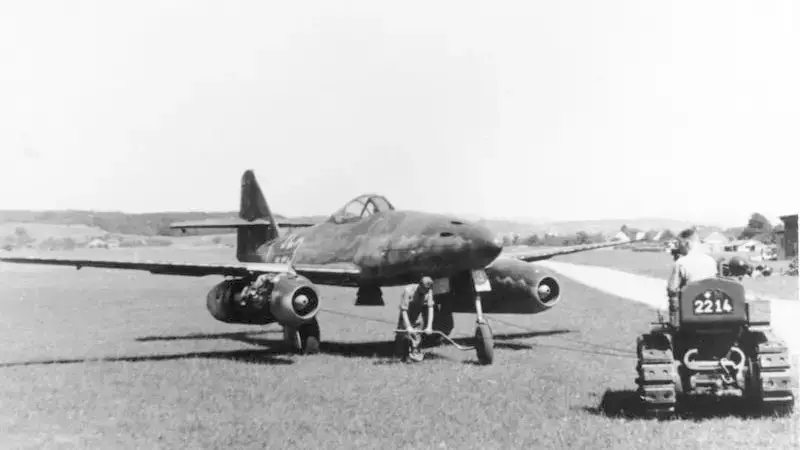Me 262 Schwalbe – Troubled Development
The Me 262 is one of the great “What Ifs” of World War Two. What if Germany had been able to introduce larger numbers of this jet fighter, earlier in the war?
Could this really have changed the outcome of the air war? Was the development of this radical fighter really hampered by the personal intervention of Hitler? Few aircraft have generated more myths and more misunderstandings than the Me 262.
What is certain is that this was the first jet fighter to enter operational service with any nation and that it was remarkably advanced in many respects.
But it was also flawed and hampered by the fact that, by the time that it finally entered service, Nazi Germany was critically short of the resources needed to build these aircraft and the time and facilities needed to train pilots. This is the real story of the Me 262.
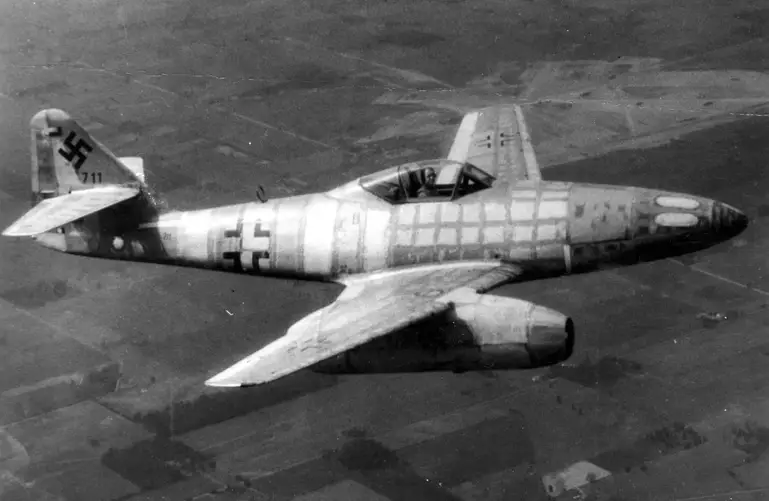
In the period between the wars, the concept of what would become the turbojet engine was well understood and it was generally accepted that such an engine might be capable of developing considerably more thrust than a conventional piston engine driving a propellor.
However, it was also recognised that considerable technical challenges would have to be overcome to make a reliable jet.
It wasn’t until the 1930s that the first attempts were made to turn the jet engine into practical reality. By coincidence, these took place in three countries almost simultaneously and completely independently.
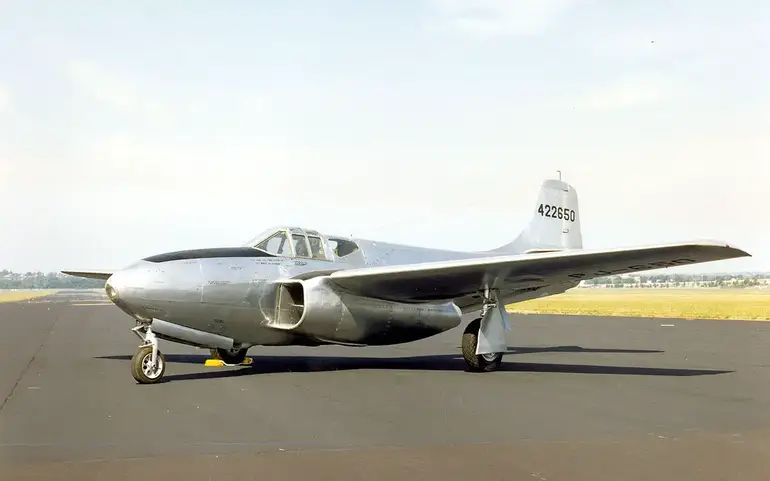
In Britain, RAF officer Frank Whittle applied for a patent for a reciprocating engine driving a compressor to produce a jet in early 1930.
In America, Vladimir Pavlecka, Chief of Structural Research at Douglas Aircraft, began sketching out designs for a gas-turbine engine in 1933. However, the first operational jet engine would be built in Germany, with a design created by a young German engineering student, Hans von Ohain.
Von Ohain applied for a patent for a turbojet engine in 1934. In early 1936, he joined Heinkel Flugzeugwerke. Just over one year later, in March 1937, the very first jet engine in the world was run at the Heinkel works.
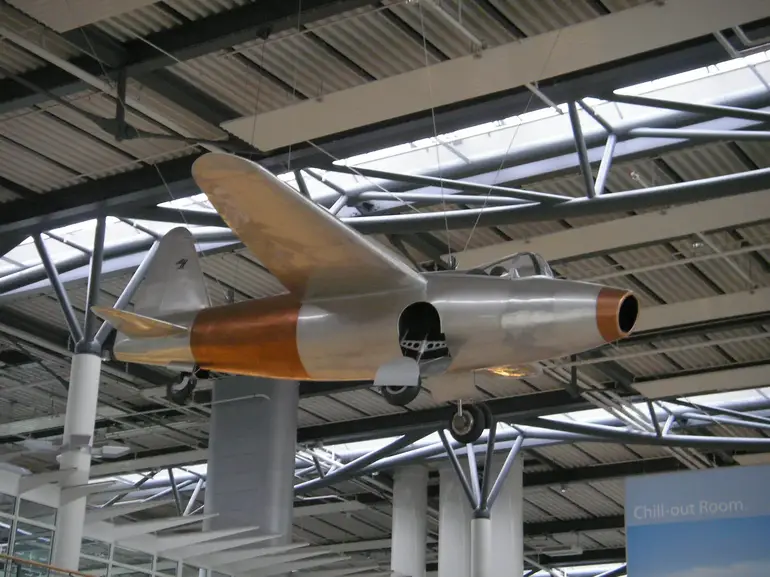
It was crudely constructed out of sheet metal, but it provided over 500 pounds of thrust, far more than had been expected. Clearly, building a jet engine was possible, and soon, Junkers also began building its own jet engine, in secret and without reference to the work done by Heinkel.
By mid-1939, the Reichsluftfahrtministerium (RLM – the German Air Ministry) had become aware of these developments.
It was clear to most people that a new war was coming and that the jet engine might offer the possibility of more performance than could be provided by any piston engine.

To avoid duplication of effort, Heinkel was ordered to cease work on jet engines, and two aero-engine companies, Junkers Motoren (Jumo) and BMW, were formally instructed to conduct research into jet engine development. This would lead to the creation of two new turbojet engines, the BMW 003 and the Jumo 004.
Two aircraft manufacturers, Heinkel and Messerschmitt AG, were instructed to begin design work on a completely new airframe for a military aircraft powered by a pair of these engines and capable of a top speed of not less than 530mph (the Luftwaffe’s most advanced front-line fighter at this time, the Bf 109E, had a top speed of around 350mph).
This was certainly a startlingly advanced specification, and the fact that it was raised before World War Two had even begun has led to speculation that Germany could have had an operational jet fighter much earlier than it did, but the truth was that the technology involved in jet engines was still immature and it was this that led to the protracted development of the new aircraft.
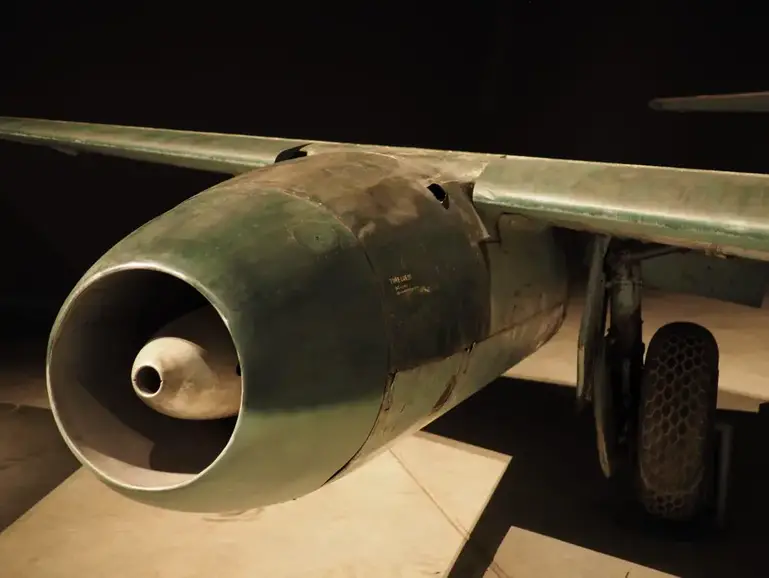
Projekt 1065
The Messerschmitt response to the RLM specification was Projekt 1065, a straight-wing design with a pair of BMW 003 engines buried in the wing roots. The aircraft was provided with two main wheels and a single small tailwheel, all retractable.
However, although the airframe design was largely complete by June 1939, engine development was lagging far behind. Both the BMW 003 and Jumo 004 engines were struggling with a lack of an alloy light enough to build the internal parts of the engine but were able to resist the very high temperatures encountered.
As a result, development was slow and it quickly became apparent that the BMW engine in particular would be considerably heavier than anticipated.
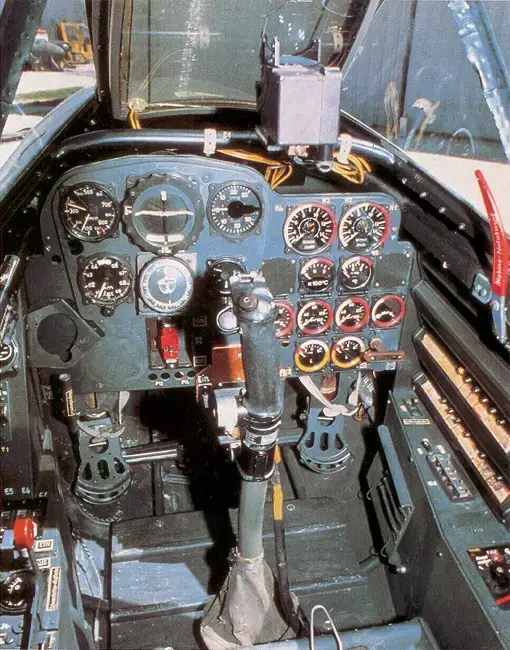
Partly because of this, and partly because Messerschmitt engineers realised that engines embedded in the wing roots would be difficult to access for maintenance, that led to a significant design change.
The engines were moved outboard, to pods slung underneath the wings. This improved access, but it also affected the aircraft’s centre of gravity.
Rather than consider a completely new design, it was decided to sweep the wings back at 18.5°. This gave the Me 262 its distinctive appearance and led to the name it was later given: Schwalbe (Swallow).
However, one year after the initial airframe design was completed, there were still no jet engines available from either BMW or Jumo.
These drawings show the swept-back wing design. Photo credit – Voytek S CC BY-SA 3.0.
To allow at least some basic flight testing to take place, it was decided to fit the new aircraft with a conventional piston engine. The first flight of what was designated the Me 262V1 would be powered not by jet engines, but by a single, 750hp piston engine driving a two-blade wooden propellor mounted in the nose.
Flight Testing the Me 262
The first flight of the Me 262V1 took place in April 1941 and the aircraft achieved a speed of just 260mph. The first BMW 003 engines did not arrive at the Messerschmitt plant until November 1941 and were not ready for the first flight test until March 1942.
During the first flight, the aircraft was able to take off, but both jet engines flamed out and the pilot was forced to make an emergency landing using only the power of the Jumo 201 which was fortunately still fitted in the nose.
It was clear that further development work was needed on the BMW engine, but the new 003A would not be available until October 1943.
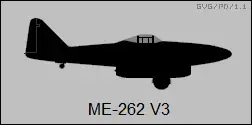
As an interim measure, the Me 262 was designed to use the Jumo 004 engine. However, the development of this engine had been hampered by instructions that it should use as little “essential war material” as possible.
This included scarce alloys which were needed for the production of conventional aircraft and other weapons.
This was understandable: no one really knew if jet-powered aircraft would be viable, and it made sense to focus skilled workers and resources on known technology, but as a result, the Jumo 004 would have inherent flaws and would never be entirely reliable.
The third prototype Me 262, fitted with two Jumo 004A engines, but without the Jumo piston engine in the nose, flew for the first time in July 1942. The fifth prototype was the first to use the tricycle undercarriage seen on all subsequent models – pilots had complained about poor visibility while taxiing but the long, fragile front undercarriage leg would prove to be an enduring problem for this aircraft.
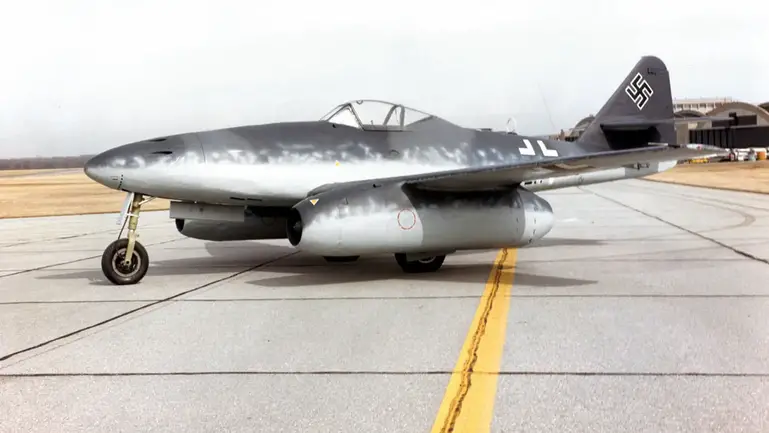
By November 1943, the sixth prototype was able to achieve speeds of 450mph and it was demonstrated in front of Adolf Hitler. He was extremely impressed with the new fighter but insisted that it also be developed as a high-speed bomber.
Hitler’s unexpected intervention is often cited as the main reason for the delay in bringing the Me 262 into service, but that’s simply not true.
Messerschmitt AG was already working to a tight schedule, and they were certainly taken by surprise by this new requirement, but there is no evidence that work on the fighter-bomber version, which became known as the Sturmvogel (Storm Bird), caused lengthy delays in the introduction of the fighter.
However, indeed, Hitler’s later insistence that a proportion of Me 262s was produced as Stormvogel did limit the total number of fighter versions available.
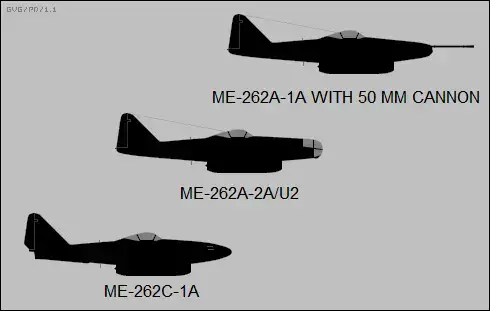
Far more significant delays to the Me 262 programme were caused by other factors. On August 17th, 1943, the Messerschmitt AG plant at Regensburg was badly damaged in a bombing raid by B-17s of the USAAF.
This destroyed some of the Me 262 prototypes under construction and, critically, some of the jigs and tools used for airframe production. However, the most serious delays were caused by continuing problems with the Me 262s engines.
By mid-1943, the Jumo 004A engine was becoming more reliable and successfully completed several 100-hour tests.
But, its construction still used nickel and molybdenum. These were in critically short supply, and as a result a new version, the Jumo 004B, was designed to use mild steel parts with an aluminium coating to prevent oxidisation.
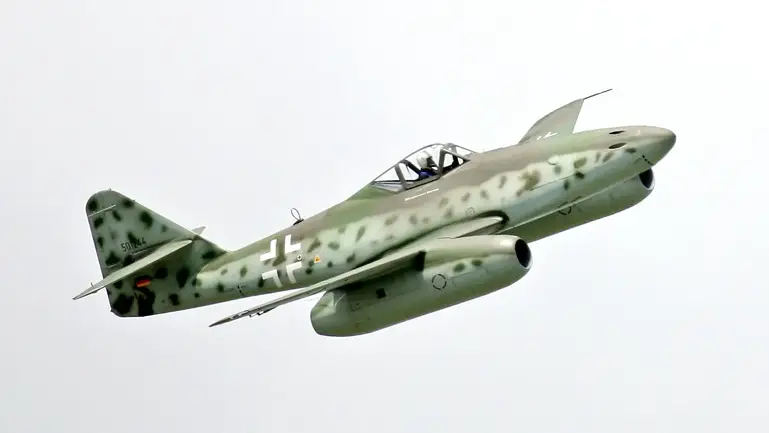
However, this new version of the engine took time to develop and was found to have a service life of just 10 – 25 hours. Due to this redesign, the Jumo 004B engine would not go into production until June 1944 and it wasn’t until August 1944 that the first batch of 90 Me 262s was delivered to the Luftwaffe. By that time, it was much too late for this radical aircraft to have any significant impact on the course of the war.
A training unit, Erprobungskommando 262, was created in April 1944 to undertake combat testing of a handful of pre-production Me 262s, but it wasn’t until September that substantial numbers of these aircraft began reaching front-line Luftwaffe units.
Two principal versions were used: the Me 262 A-1a Schwalbe interceptor armed with four 30 mm MK 108 cannons in the nose and the Me 262 A-2a Sturmvogel armed with two MK 108 cannons and capable of carrying either two 250kg or one 500kg bomb.

There were also experimental night-fighter, two-seat bomber, and reconnaissance versions, but none were produced in large numbers.
The Me 262 was certainly fast, more than 100mph faster than the fastest Allied single-engine fighter at the time, the P-51 Mustang, but all versions needed very careful handling.
Thrust was poor at low speeds, which made this aircraft very vulnerable during take-off and landing – standing patrols of Fw 190 fighters were needed to provide top cover to protect jet airfields.
The Jumo 004B was prone to compressor stall and flame-out if the throttle was opened or closed too quickly and it required a major overhaul after just ten hours of running. Even then, the jet engines were not reliable and it was believed that many Me 262s were lost due to engine failures, partly attributable to insufficient training of inexperienced pilots.
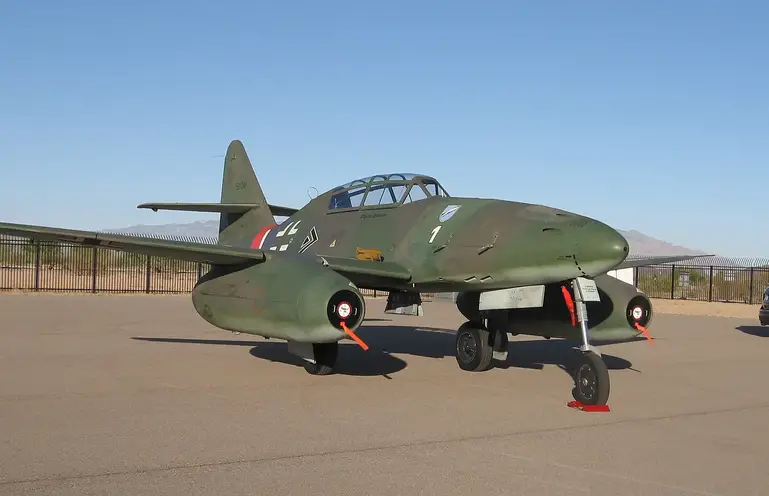
In combat, the Jumo engine also left a distinctive trail of black smoke that made the Me 262 easy to spot and attack.
A total of around 1,400 Me 262s were produced, but only around 300 were used in combat, and in general, no more than 30 – 40 of these aircraft were operational at any one time.
Conclusion
The Me 262 was a radical aircraft, but it was never a war-winning weapon. The fragile Jumo engines were a limitation that was never overcome and the protracted development of this immature technology meant that the Me 262 was never available in large numbers.
The Schwalbe was an awesome bomber interceptor, but it certainly wasn’t invulnerable in air combat. The Sturmvogel version was fast enough to avoid most ground fire, but it could only carry a tiny bomb load and it was too fast for accurate bombing or strafing: it wasn’t uncommon for bombs dropped by Sturmvogels to land a mile or more from their targets.
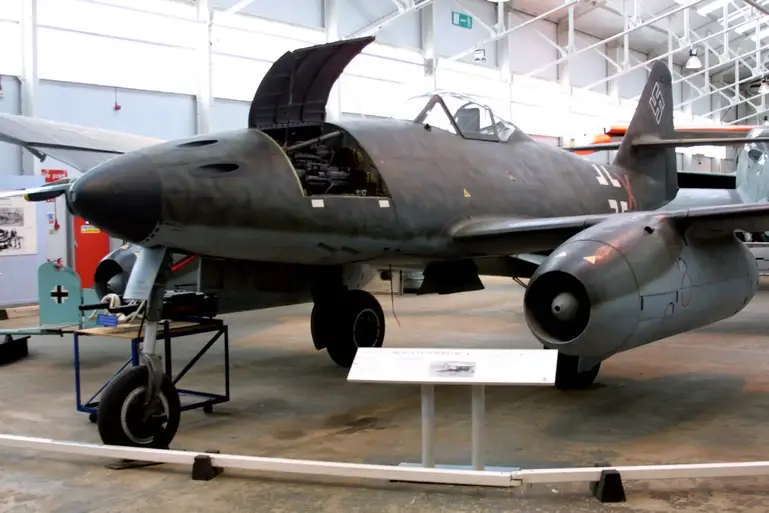
Some people have suggested that if it had been available in larger numbers and earlier, the Me 262 might have changed the course of World War Two.
Luftwaffe General Adolf Galland, for example, claimed after the war that, if the Me 262 had been available one year before and in substantial numbers, that it might have been possible to use it to end the American daylight bombing campaign against Germany.
The evidence suggests that this is simply not true. Nazi Germany had limited resources and production facilities. Switching to focus on the more rapid development of the Me 262 and its jet engines would have meant producing fewer of the piston-engine aircraft that Germany so desperately needed to maintain the war effort.

Even if a large number of the Me 262 had been available earlier, the evidence suggests that this wouldn’t have made a major difference.
For example, in April 1945, one of the largest forces of Me 262s ever assembled attacked an American formation over Northern Germany. Almost 60 Me 262s of JG 7 attacked the fighter escorts protecting a massive USAAF bomber formation.
The German jets claimed 18 kills, but 27 Me 262s were lost, almost half of the entire attacking force! The Me 262 has earned its place in history as the first operational jet fighter, but it was never the wonder weapon that is sometimes claimed.
Hits: 0
